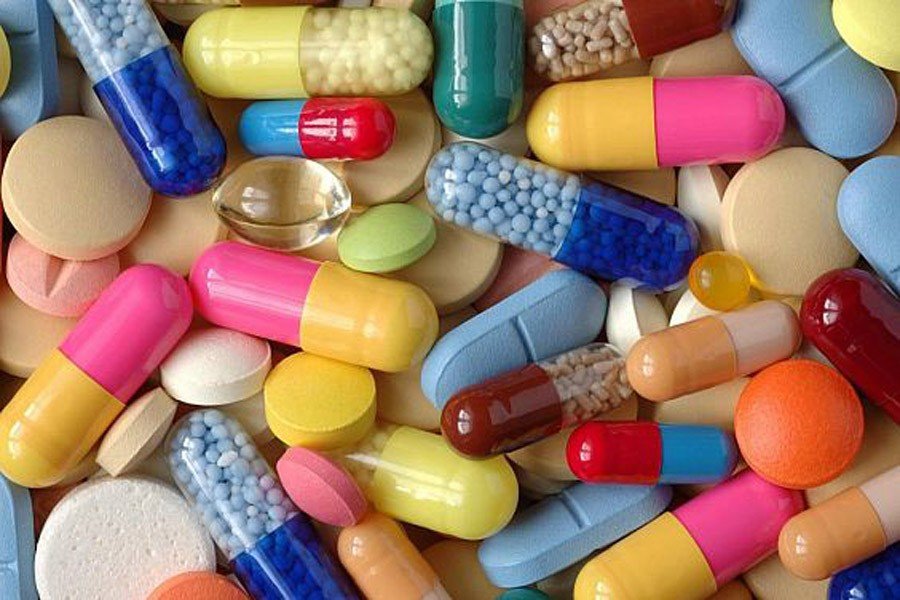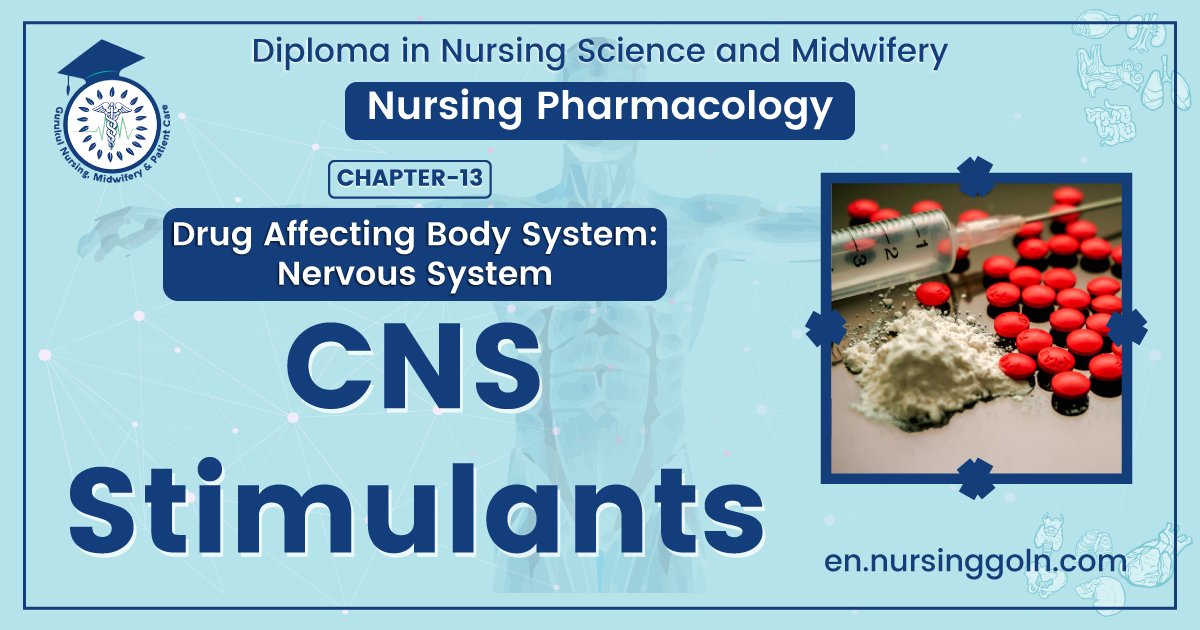CNS Stimulants – This book covers the entire syllabus of “Pharmacology” prescribed by BNMC- for diploma in nursing science & midwifery students. We tried to accommodate the latest information and topics. This book is an examination setup according to the teachers’ lectures and examination questions.
At the end of the book, previous questions are given. We hope in touch with the book students’ knowledge will be upgraded and flourish. The unique way of presentation may make your reading of the book a pleasurable experience.
CNS Stimulants
Neuroleptics
Neuroleptics are the drugs that cause stimulation of CNS but do not cause convulsion in normal doses.

Classification of CNS stimulants
A. Directly acting on CNS:
a. Cortical stimulants:
- Caffeine
- Aminophylline
- Theophylline
- Theobromine
- Amphetamine
- Ephedrine
- Cocaine
- Atropine
b. Medullary stimulant
- Bemegride
- Picrotoxin
- Amiphenazole
- Adrenaline
- Nikethamide
- Doxapram
- CO2
- Leptazole
c. Spinal stimulants:
- Strychnine
- Thebaine
- Brucine
B. Reflexly acting on CNS:
1. Nicotine
2. Lobeline
3. Ammonia
4. Venetrum alkaloid
Analeptics
Analeptics are the drugs that produce recovery from dead by medullary stimulation, i.e. stimulation of vital centres for respiration & circulation, especially when they are depressed. (e.g. hanging, drowning, strangulation). Because of awaking effect they are called Analeptics.

Nikethamide
Nikethamide is a synthetic pyridine derivative. It is colorless or a yellow liquid with a characteristic aromatic odour.
Mechanism of action of Nikethamide
1. It stimulates the respiration both directly stimulating respiratory centre and reflexly through the carotid sinus.
2. It increases the sensitivity of respiratory centre to CO₂ especially when the centre is depressed.
Pharmacological action: It stimulates respiration & increase blood pressure.
Indication of nikethamide
1. Chronic hypoventilation with CO2 retention, secondary to pulmonary disease
2. Respiratory failure due to overdose of CNS depressant.
3. Respiratory failure in new-borne.
4. Post anaesthetic respiratory depression.
Adverse effects of nikethamide
1. Hypertension
2. Vomiting
3. Tachycardia
4. Cough
5. Arrhythmia
6. Hyperpyrexia
7. Tremor
8. Muscle rigidity
9. Tonic clonic convulsion

Convulsion
Convulsion is a violent involuntary spasmodic contraction of the skeletal muscles produced as a result of powerful stimulation of motor neurons in the CNS.
Anticonvulsants: Drugs that stop convulsion.
Classification of anticonvulsants
1. Anti-epileptic drugs.
2. Drugs used in other convulsions (i.e. tetanus. Strychnine poisoning, eclampsia)
Read more:
